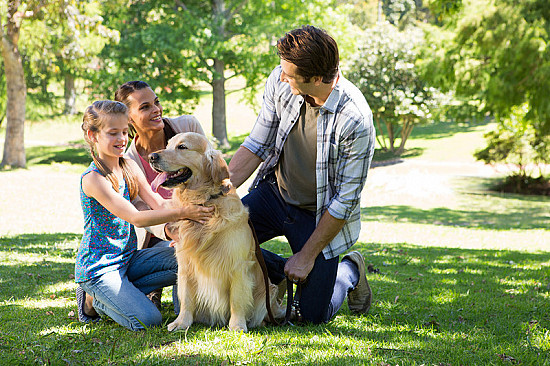Understanding the Environment and Climate: What’s Happening and What We Can Do

Table of Contents
ToggleClimate change and environmental issues are becoming more visible in our everyday lives. Whether it’s extreme weather events, shifts in seasons, or wildfires and droughts, it’s hard to ignore the signs. But what’s actually going on, and what can we realistically do about it? In this post, we break down what’s happening to our planet, what’s causing it, and how each of us can contribute to making a difference—without getting overwhelmed.
Let’s talk facts, not fear. This post is for anyone interested in the environment and climate, looking for solid, practical insights without the hype.
What’s the Difference Between Climate and Weather?
Before we get into the big issues, it’s important to understand the basics.
- Weather is what you experience daily—like rain, sunshine, snow, or wind.
- Climate refers to long-term patterns in temperature, humidity, and precipitation over decades.
For example, a hot day in January might be unusual weather, but if every January is warmer for decades, that points to a changing climate.
Climate change is about shifts in the average climate conditions over time. It’s not about one cold winter or one hot summer—it’s about the trend. And the trend right now is warming.
What’s Causing Climate Change?
Scientists overwhelmingly agree: the Earth is warming, and human activity is the main driver. This isn’t about opinions—it’s about data.
The major causes include:
- Burning fossil fuels (coal, oil, and gas) for energy, which releases carbon dioxide (CO₂)
- Deforestation, which reduces the Earth’s ability to absorb CO₂
- Industrial agriculture, which contributes methane and nitrous oxide—two powerful greenhouse gases
- Waste and pollution, including plastics and non-biodegradable materials
Greenhouse gases trap heat in the atmosphere. Since the industrial revolution, levels of these gases have spiked, especially CO₂. This has caused average global temperatures to rise about 1.1°C (2°F) above pre-industrial levels.
You might think, “That doesn’t sound like much,” but small changes in average temperature can have big impacts.
The Impact We’re Seeing Now
The effects of climate change are no longer predictions for the future—they’re happening now.
Some real-world impacts include:
- More extreme weather – Stronger storms, longer droughts, and record-breaking heatwaves are becoming more common.
- Rising sea levels – Melting glaciers and ice sheets are adding water to the oceans, threatening low-lying areas.
- Loss of biodiversity – As temperatures rise, habitats change. Some plants and animals can’t adapt quickly enough and face extinction.
- Wildfires and floods – Dry conditions fuel fires, while heavy rainfall causes flooding. Both are happening more frequently and more intensely.
- Food and water insecurity – Changing weather patterns affect crop yields, while droughts and floods disrupt water supplies.
These changes aren’t just happening somewhere else. They’re showing up in every region—from California to the Arctic, from Africa to Europe.
How Our Choices Matter
You’ve probably heard the usual advice: recycle more, drive less, eat less meat. These are valid tips, but the truth is that tackling climate change requires action on many levels.
Individual actions still matter, especially when multiplied across millions of people.
Here’s what makes a real impact:
- Energy use at home: Switch to energy-efficient appliances, turn off unused devices, and explore renewable energy options like solar panels.
- How we travel: Walking, biking, using public transport, or driving electric vehicles can reduce personal carbon footprints.
- What we eat: Reducing food waste and choosing more plant-based meals helps lower the demand for resource-heavy agriculture.
- What we buy: Supporting companies that use sustainable materials and practices can shift demand toward more responsible production.
Some lifestyle choices, like using disposable consumer products, have long-term environmental impacts too. Many single-use items are made of plastic or are difficult to recycle. While products like fifty bar disposable vape may be convenient, they also contribute to electronic and plastic waste—an issue many environmental organizations are trying to address.
This doesn’t mean you can’t use these products. But being aware of their impact can help you make more informed decisions, like disposing of them properly or choosing alternatives when possible.
The Role of Industry and Policy
It’s not just about individuals. Industry and government action is essential to making large-scale changes.
Some of the biggest opportunities lie in:
- Energy transition: Moving from fossil fuels to renewable sources like wind, solar, and hydroelectric power.
- Sustainable infrastructure: Building cities with better public transport, green spaces, and energy-efficient buildings.
- Agricultural innovation: Supporting farming techniques that use less water, preserve soil, and cut emissions.
- Climate policy: Implementing rules that limit emissions, support clean energy, and protect vulnerable ecosystems.
There’s growing pressure on businesses to reduce their environmental impact. In consumer markets, even products like Fifty Bar Vape Flavors are now being scrutinized for their environmental footprint—particularly the packaging and materials used.
Public awareness is increasing, and that’s pushing companies and politicians to act. Voting, advocacy, and community involvement are all ways we can push for stronger climate action.
What’s Next and How to Stay Engaged
There’s no single solution to climate change—it’s a complex problem with many moving parts. But that’s also why there’s so much room for innovation, collaboration, and progress.
If you’re just starting to explore this topic, here’s how to stay engaged:
- Follow trusted sources: Look for evidence-based reporting and updates from organizations like NASA, NOAA, the IPCC, or your local environmental groups.
- Get involved locally: Whether it’s a tree-planting event, climate protest, or community garden, local efforts make a difference.
- Talk about it: The more people understand climate issues, the more momentum we can build for change.
It’s okay to feel overwhelmed sometimes. Climate issues are serious, but they’re not hopeless. Progress is being made—clean energy is growing, climate awareness is spreading, and communities around the world are adapting.
What matters most is consistent effort, curiosity, and the willingness to keep learning.
Final Thoughts
Understanding the environment and climate isn’t about doom and gloom—it’s about being informed, taking action, and being part of the solution. Change won’t happen overnight, but with each step forward—big or small—we get closer to a more sustainable future.
Remember, we all share this planet. The more we know, the better we can take care of it.
- Arts & Style (100)
- Automobile (288)
- Business (5,740)
- Business and Entrepreneurship (168)
- Career Development (55)
- Climate & Environment (26)
- Creative (34)
- Culture (1,562)
- Beauty (284)
- Skincare (243)
- Cultural Studies (75)
- Digital Life (73)
- Energy Healing (31)
- Fashion (1,040)
- Clothing (697)
- Fashion Design (234)
- Philosophy (7)
- Morality (6)
- Religion (17)
- Sports (116)
- Beauty (284)
- Digital Marketing (343)
- DIY and Crafts (15)
- Economics (8)
- Education (1,285)
- Entertainment (198)
- Faith & Spiritual (10)
- Fashion and Beauty (155)
- Finance and Money Management (211)
- Fitness and Exercise (32)
- Food and Drink (171)
- Game (142)
- Health and Wellness (1,099)
- Home and Garden (391)
- Law (144)
- Lifestyle (1,384)
- Health (685)
- Home (390)
- Architecture (100)
- Interior Design (216)
- Rental Property (27)
- Pets (76)
- Relationships (70)
- Restaurants (19)
- Literature (7)
- Media (273)
- Packaging (41)
- Politics (1)
- Real Estate (257)
- Science and Nature (14)
- SEO (141)
- Social Media Marketing (51)
- Software Development (227)
- Sports and Fitness (44)
- Technology (855)
- Artificial Intelligence (239)
- Blockchain (61)
- Data Science (114)
- Gadgets (145)
- Security (142)
- Transportation (111)
- Travel & Tourism (761)
- Uncategorized (2,018)
- World (62)
- International (59)
- How to Style Diamond Earrings for Any Occasion

- KYC Verification: Strengthening Financial Integrity Through Identity and Transaction Monitoring

- Absorb More Comfort with Towel Hub’s Soft Wholesale Towels

- Latest Nexa Vape Flavors and Pods: A Realistic Look at What’s New

- Top Benefits of Partnering with the Best Flutter App Development Company


What’s the Best Season to Sow Peacock Flower Seeds?

Can a Chimney Sweep in Cincinnati Prevent House Fires?

Discovering the Best Massage Center Karachi

Climate and Environment: What Everyone Should Understand

Latest Nexa Vape Flavors and Pods: A Realistic Look at What’s New

Fashion and Vape: How Style Meets Vaping Culture
